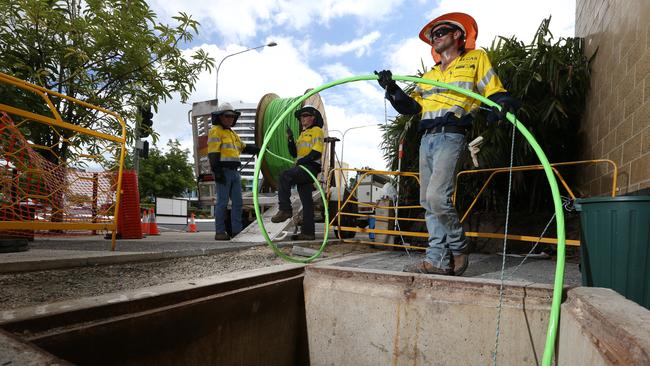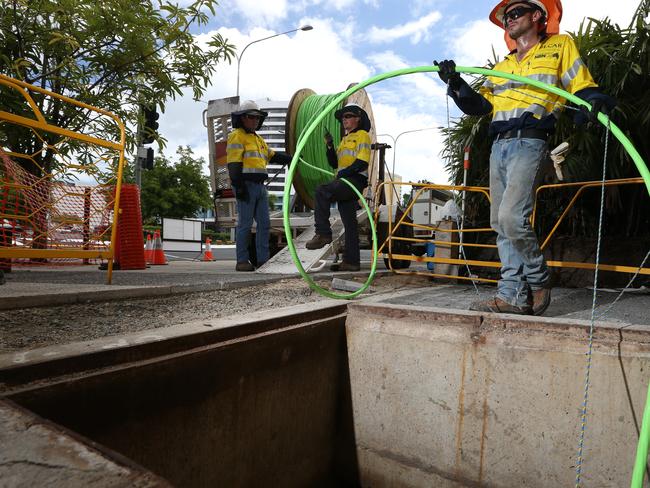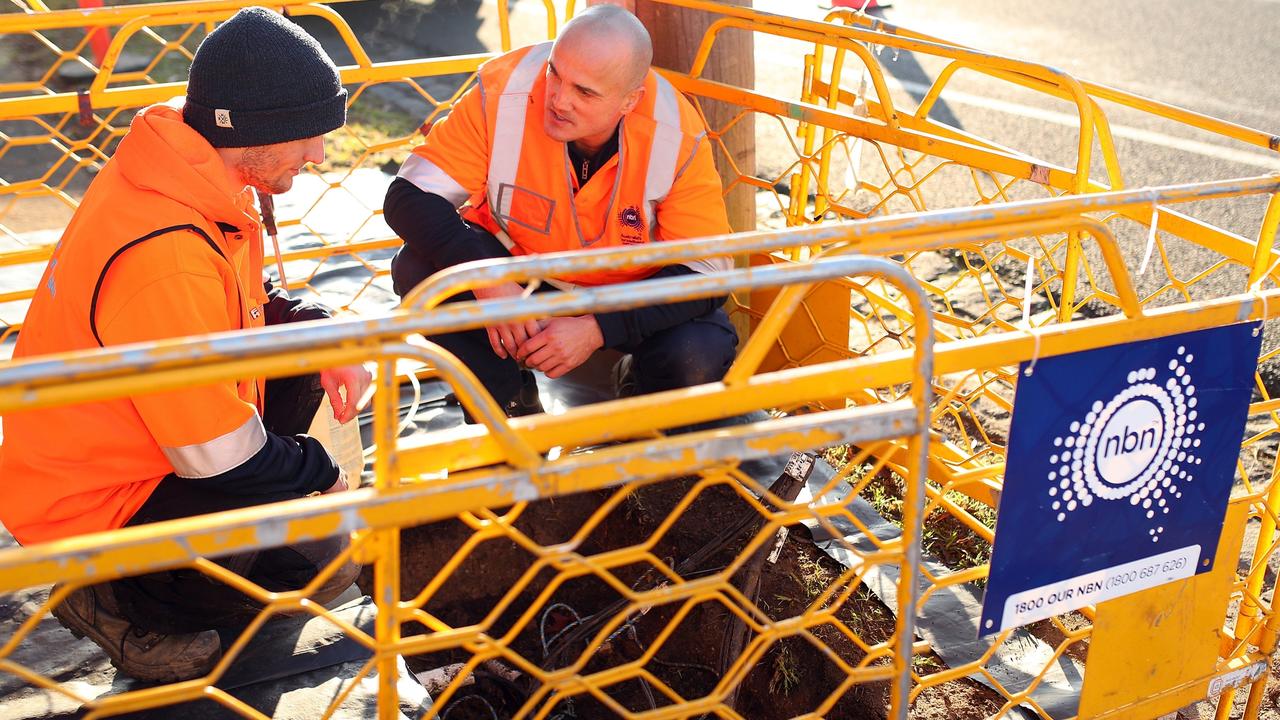Telstra to publish NBN download speeds as experts claim Australian internet users are confused
AUSTRALIAN internet users are confused and being misled over NBN download speeds, and one provider plans to overhaul the system this year.

NBN
Don't miss out on the headlines from NBN. Followed categories will be added to My News.
AUSTRALIANS are being ‘misled’ about internet speeds delivered by the National Broadband Network and consumers can only find out what they’ll really receive after their home has been connected to the network.
And Australia’s biggest telecommunications provider, Telstra, has joined the chorus of critics, with chief executive Andy Penn revealing plans to publish NBN speed information over the coming months in a bid to reduce confusion around the service.
The move follows a 100 per cent increase in NBN complaints to the Telecommunications Industry Ombudsman over the last financial year, many of them about the speed of internet access.
Mr Penn told News Corp there was “absolutely” confusion around what sort of internet connection speeds consumers could expect from NBN connections, and the performance of the national network.

“Not all experiences are the same, not all NBN services are the same,” Mr Penn said.
“The industry should be publishing the speeds that they are delivering across the various technologies and we’ll be absolutely preparing ourselves to be able to do that. What’s critical is that the industry comes along on that journey so there’s no game-playing.”
As part of the plan, Telstra will publish new NBN information in April showing “a national average measure of broadband performance in busy periods when demand is greatest,” a spokesman said.
Telstra will make more information available midyear, however, revealing NBN internet speeds consumers can expect at their individual homes based on the type of NBN connection they will receive.
“This will include information on what speeds they can expect in busy periods and what applications they can run at those speeds,” the spokesman said. “Our sales consultants will run these performance estimates for customers when they contact us about moving to the NBN.”
Australian homes and businesses are currently being connected to the NBN by a mix of pay TV cable, satellite, and fibre-to-the-node — a fast fibre connection to a cabinet in the street, and a slower copper phone line connection to the home.
Internet Australia chief executive officer Laurie Patton said Telstra’s move could help to address a major frustration for NBN users.

“The biggest problem is service providers can’t even tell you what the speed will be until they connect you up,” he said.
“That wouldn’t be a problem if it was fibre-to-the-home because the options would be very fast or very, very fast, but now it’s not clear.
“The speeds you can ultimately receive will depend on a whole range of factors, the most significant being the state of the ageing copper wires in your area.”
Mr Patton said this was complicated recently when NBN Co removed information from its website showing consumers what type of connection they could expect to receive.
Australian Communications Consumer Action Network spokesman Luke Sutton said Australians needed greater transparency around internet connections as packages were being advertised in a misleading way.
“Information provided to consumers about broadband speeds is often confusing and can also be misleading as claimed speeds frequently don’t match reality,” he said.
“Terms like ‘speeds up to’ are confusing for consumers, especially those who are not very technical.”
Mr Sutton called on the federal government to introduce an independent broadband performance monitoring program to test actual internet speeds against those advertised, similar to a successful pilot run by the Australian Competition and Consumer Commission in 2015.



